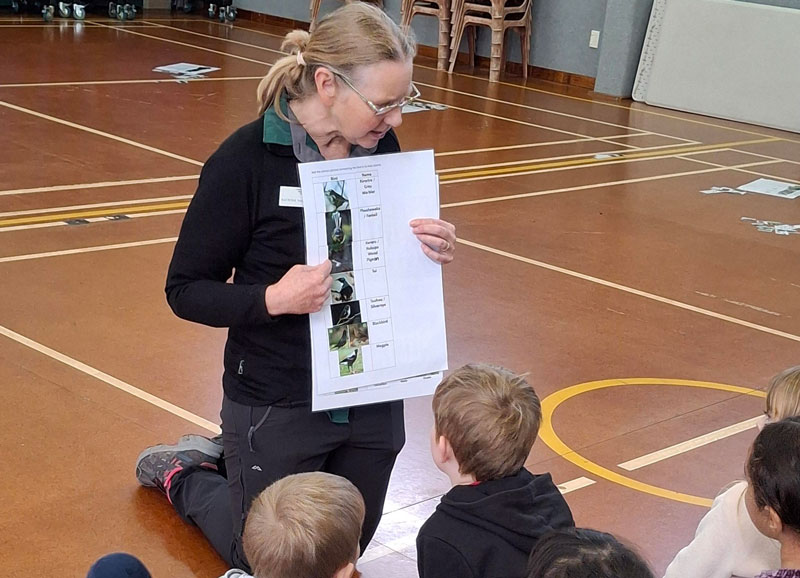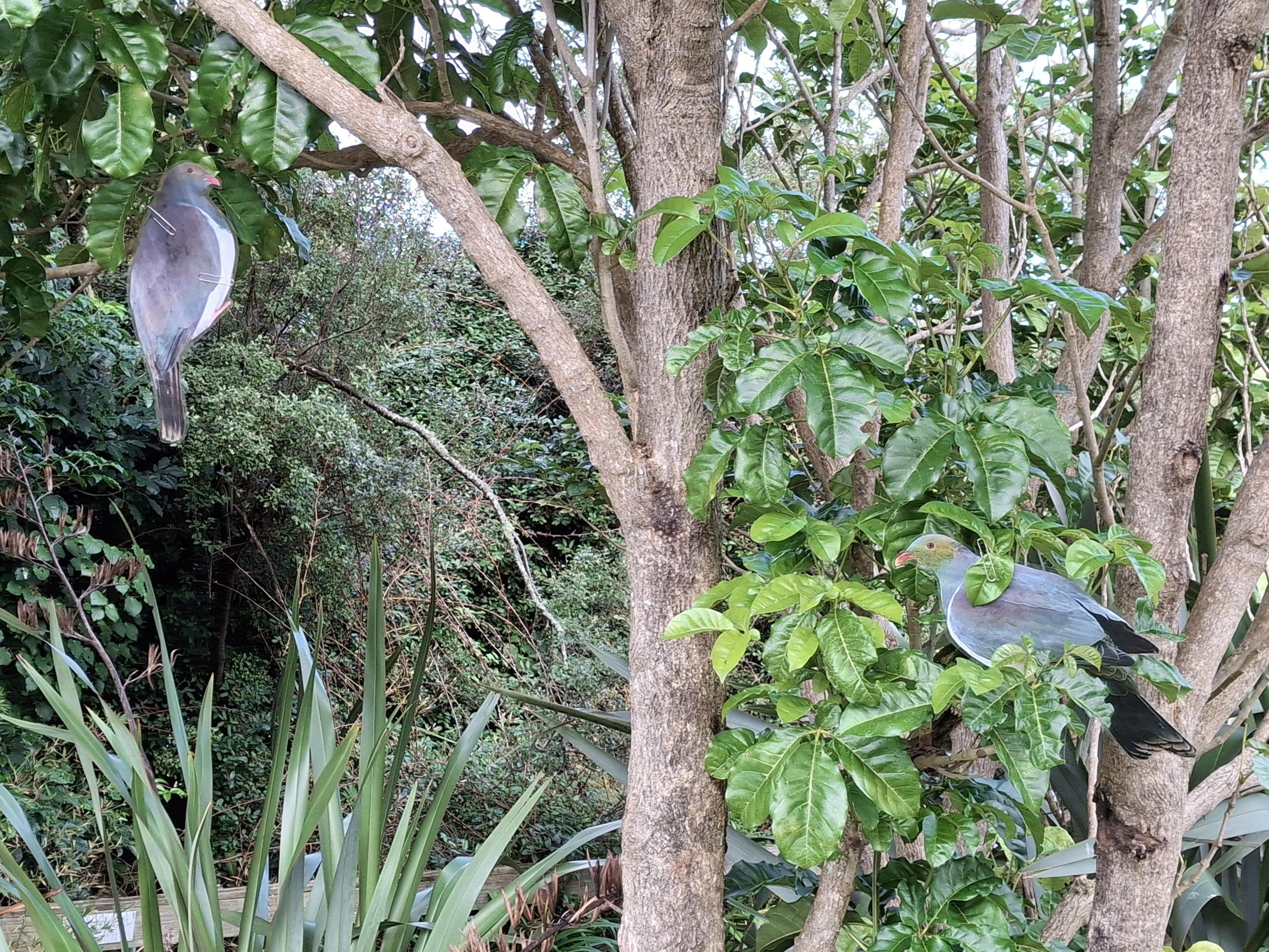Story
Matarau school holds full-day avian education event

The students working together to complete the mock bird survey.
Birds of Aotearoa were the stars of the show at Matarau School on 25 June, as the entire kura took part in a full-day avian education event.
From Year 0 to Year 8, all 265 students rotated through a series of hands-on sessions designed to deepen their understanding of our birdlife and the role they play in our ecosystems and culture.
The day was led by Northland Regional Council’s Biodiversity and Enviroschools teams, including Stephanie Membery (Biodiversity Advisor), Katrina Hansen (Biodiversity Specialist), and Enviroschools Facilitators Zeralda Pirini and Jane Norman.
“It was a fantastic opportunity to connect tamariki with the natural world in a really interactive way,” said Stephanie. “They were curious, engaged, and full of great questions.”
The programme included eight 30-minute sessions, each offering a different activity and focus on bird life.
Tamariki learned how to identify birds by their calls, explored the link between beak shape and diet, and even took part in a mock garden bird survey.

Birds eye view: Students matching the birds to the food sources.

NRC Biodiversity Specialist Katrina Hansen explaining the answers to the students.
In the opening session, Stephanie introduced tamariki to the concept of endemic, native, and introduced species, and why birds are considered tāonga (treasures) in te ao Māori.
They learned about extinct species like the huia and moa, and the threats facing birds such as the kākāpō and matuku-hūrepo.
The bird call identification session was a clear favourite, with tamariki listening to recordings and matching them to birds like the tūī, riroriro, and pīwakawaka.
“It didn’t take long before they were calling out bird names like pros,” said Zeralda. “We were seriously impressed.”
Another highlight was the beak and feeding activity, where tamariki worked in groups to match birds with their food sources.
Older students also explored how beak shape relates to diet and habitat and shared their findings on colourful post-it notes.
The day also tied in with the national Garden Bird Survey, run by Manaaki Whenua. Tamariki took part in a mock survey using clipboards to record both real birds and cut-outs hidden along a bush path.
A real-life flock of tūī even made a surprise appearance, much to their delight!
Teacher Jo Gunson praised the event for its depth and interactivity. “It was great to see the kids so engaged,” Jo said. “We’d love to have longer sessions next time.”
The school also encouraged whānau to take part in the Garden Bird Survey over the holidays and shared links to the survey and a colouring competition in their newsletter and on Facebook.
The avian education Day was one of several recent collaborations between Northland Regional Council and Matarau School.
On 29 May, NRC Biosecurity team members Bryn Heller and Maria Secker ran nine short sessions exploring how common weeds spread.
Students matched weed samples to dispersal methods, birds, wind, water, or machinery, using info sheets, observation skills, and stickers.

Don’t be fooled! Life-like kererū images as well as other birds were set up for the tamariki to find.
On 3 April, Alicia King and Jo Kim from the Biosecurity Incursions and Response team led a full-day session focused on emerging pest species in Northland. Tamariki learned how to identify and report pests such as wild deer, wallabies, red-eared slider turtles and koi carp.
The day included a surprise visit from Snappy the turtle, a ‘roar’ competition, and hands-on activities to help students recognise pest species and understand the damage they cause.
For Matarau School, these events are more than just fun breaks from routine.
They’re a celebration of learning, connection with the Enviroschools kaupapa, and a chance to explore the unique biodiversity of Te Taitokerau.
